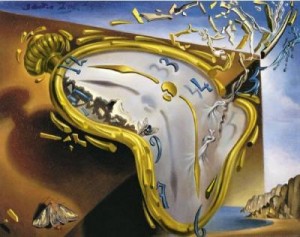 Creativity is difficult to quantify. It is often seen as a mysterious spirit that comes and goes and seems to bless some more than others. But we continue to make progress in understanding creativity, learning how we can harness it, and maximizing it for both individuals and organizations.
Creativity is difficult to quantify. It is often seen as a mysterious spirit that comes and goes and seems to bless some more than others. But we continue to make progress in understanding creativity, learning how we can harness it, and maximizing it for both individuals and organizations.
Thanks to a study by Forrester Research (commissioned by Adobe), we now have an even better understanding as to the importance of creativity on the performance, sustainability, and bottom line of organizations. It turns out there is a substantial creative dividend, and it is yours for the taking!
Creative Companies Outperform the Competition
I would be surprised if anyone reading this is not expected to be creative in some way in his or her job. “Assembly line” jobs – where you mindlessly perform some repetitive task – are becoming evermore scarce. Competition forces most of us to find ways to be more effective and efficient at our jobs. Most companies and managers understand this, but it is surprising how few companies make the effort to cultivate creativity and take advantage of it within their teams.
According to the Forrester study, fewer that half of the companies surveyed view their business practices as being in line with creative companies. Perhaps that will change now that Forrester has shown that companies that intentionally foster a creative environment for their employees outperform peers and competitors on key business performance indicators, including revenue growth, market share, and talent acquisition.
These “creative” companies enjoy a greater market share than their competitors, and are more likely to win a “best place to work” award by a margin of 3-1. That, of course, is going to directly affect their ability to attract and retain the best talent.
Creativity Starts at the Top
So how does a company become a “creative” company? It starts at the top. It has to be a part of the long-term strategic plan. Management has to be willing to devote resources to fund creative endeavors and create a climate that values the creative process. That means being willing to take risks and to realize that failure is a part of the process. It means encouraging employees to work in ways that maximize their creativity – which is now fairly well understood (and is a key part of our performance improvement programs). It requires sustained focus at all levels of management.
For most organizations, it requires change. But out-performing your competition and becoming a market leader that attracts and retains the best talent usually does.





